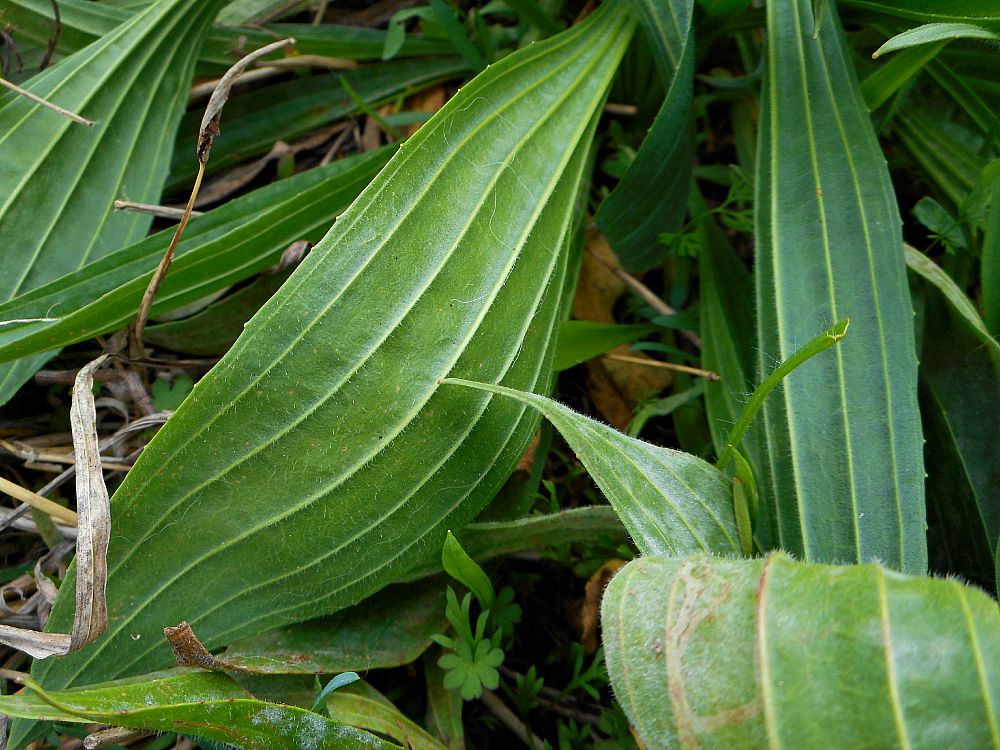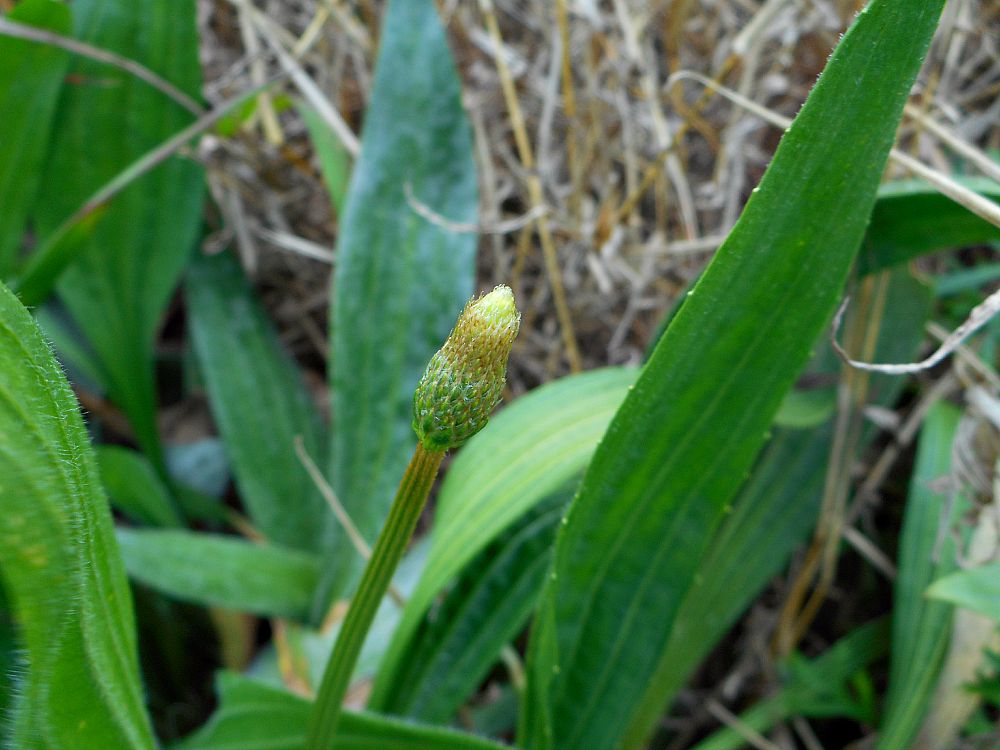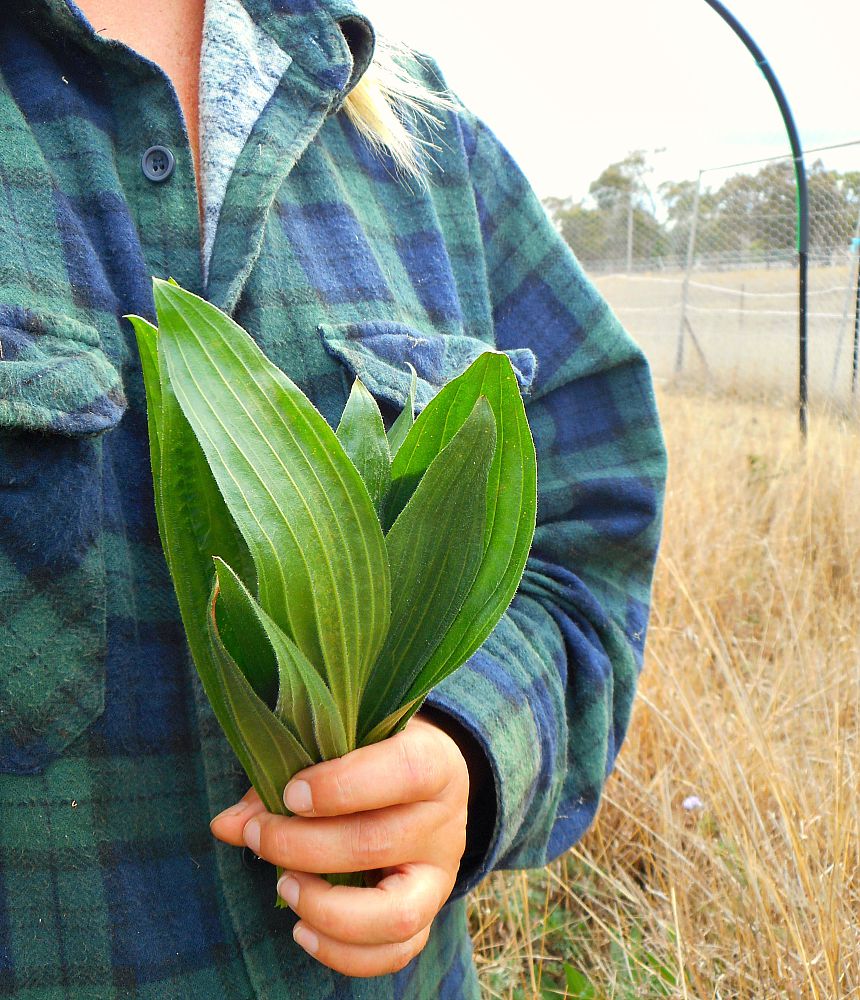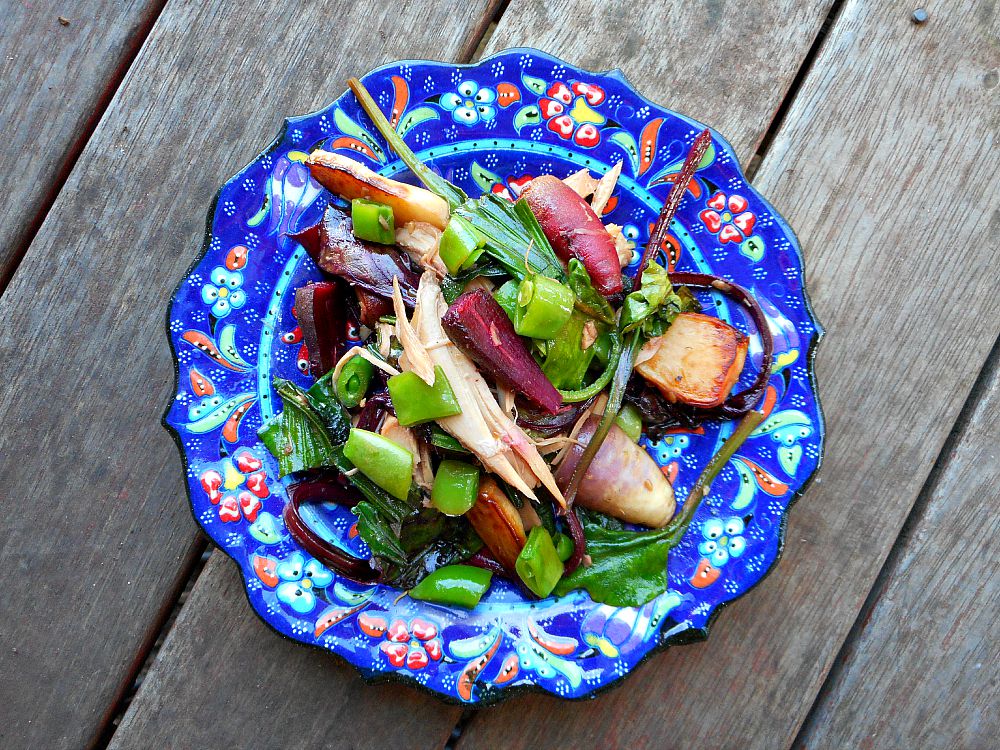
With the arrival of warmer weather, my gardens have shot up, producing all sorts of good things to eat. My goal is to have something from our farm with every meal.
Sometimes it’s eggs and dill with breakfast, sugar snap peas and coriander with lunch, kale leaves with dinner.
It feels so good to be growing what we need each day, things that make us healthier and stronger.
But sometimes I like to venture outside the garden and do a bit of foraging.
I’ve always liked the idea of foraging, and I’ve done my fair share picking huckleberries in the woods in British Columbia, collecting wild fennel in Italy, and this week, collecting plantain leaves from our Big Orchard in Australia.
Plantain is one of the nutrient-rich “weeds” that grows unbidden in nearly every environment on earth. You can find it in alpine meadows and shady woodlands, rain-drenched roadsides and heat-baked Australia.
For some reason, plantain has taken up residence in our Big Orchard, flourishing in verdant clumps near the citrus trees. While I pull out other weeds that might draw nutrients away from our fruit trees, I encourage the plantain knowing it will provide free, nutritious food for us throughout the year.
Foraging expert, Katrina Blair, has written a fantastic book called: “The Wild Wisdom of Weeds: 13 Essential Plants for Human Survival.” I love it. Chock full of history, folklore, and scientific research, it also contains excellent recipes for how to eat nutrient dense wild foods such as dandelion, thistle, amaranth, and, of course, plantain. Plantain is loaded with good things: vitamin E, calcium, potassium, Omega-3 fatty acids, iron, micronutrients, and protein. It is also anti-inflammatory, a digestive aid, helps women during PMS and menopause, and, oddly enough, increases sperm count in men, according to the latest research from the University of Malaysia.
Blair’s book has had me looking at our woods, fields, and paddocks with a whole new purpose, and set my creativity whirring as I dream up ways to use these nutritious and delicious wild foods that grow for free all around us.
This weekend I picked my first harvest of plantain leaves and set to work turning them into dinner.
I picked baby radishes and baby beetroots from my garden, along with a few kale leaves and an Asian green I can’t remember the name of. I heated up olive oil in a large pan with a few chopped garlic cloves, then added the halved radishes and beetroots to brown and caramelize while I chopped the kale, greens, and plantain leaves. Cooking radishes removes the heat completely and leaves you with a sweet, earthy vegetable that is truly delicious.
When the root veggies were done, I added all the greens, covered the pan and cooked the greens for a minute or two. Then I added shredded chicken, a handful of sliced sugar snap peas, and a hearty drizzle of ginger garlic sauce, heated everything through and dinner was ready.
Absolutely delicious. The sweetness of the root veggies and dressing perfectly balanced the earthy greens, while the chicken gave a savory note and the peas gave a light, fresh crunch.
For my first plantain dish, we gave it a resounding YES!
Do you have a favorite food you like to forage? xo
Wild Plantain Stir-Fry
Ingredients:
1 bunch plantain
1 bunch red Russian kale
1 bunch Asian greens
olive oil
2 garlic cloves, sliced
½ cup baby radishes, trimmed and halved
½ cup baby beetroot, trimmed and halved
1 cup shredded chicken
½ cup sliced fresh sugar snap peas
¼ cup ginger garlic dressing (if you don’t have a bottle, whip up your own with fresh ginger, garlic, soy sauce, sesame oil, and a bit of brown sugar)
Directions:
- Wash and chop greens and set aside.
- Heat olive oil in large frying pan, add garlic and cook about thirty seconds. Add radishes and beetroot, cut side down. Fry until golden brown on cut surface.
- Add greens, stir to coat with oil, cover and cook for 1-2 minutes until just wilted.
- Add chicken, sugar snap peas, and ginger garlic dressing, stir to coat, cover, and heat until just heated through, about 2-3 minutes.
- Remove from heat and serve warm or cold as a salad.





Wish we were confident enough in our knowledge to go foraging for foods like this. We’ve cooked with ‘weeds’ picked for us by Turkish friends but are not really sure what we’re doing, ourselves, when it comes to picking plants by the roadside etc. Oh, and have never thought of cooking radishes before (we cook wild radish leaves for a salad). Will have to give that go! 🙂
Julia
I sure understand that, @turkeysforlife:disqus. I was fairly confident in Canada because I was familiar with the wild things. But here in Australia, nearly everything is new and strange. But I’m learning, bit by bit. 🙂 How fun to have friends who forage for you! That’s brilliant. 🙂
Another yummy-looking and healthy creation from you! I don’t quite have the confidence to forage – I’d find the first poisonous thing out there!
Oh you made me laugh, @disqus_WseMqaTPwi:disqus 🙂 I make sure to do an awful lot of research before I forage. I’m like you. I’d choose the worst thing on my own. 🙂
I can see a cook book coming next – is there no end to your talents, Krista?
Oh thank you, @Kayrpea61:disqus 🙂 Doing a cookbook would be really fun. 🙂
That really is a nutritious meal. I love the colours and it looks so pretty on your plate. I think if I foraged on my property for food I’d starve to death but I think its fantastic that at every meal, you’re eating something from your farm xx
It is definitely much harder in the city, Charlie. Unless you like dandelions a LOT! 🙂 I’m very thankful for this property we’re on. Just when I think I’ve learned all there is to know about this place, I learn more. 🙂
Wow, that is so amazing to have foraged on your own property for food. I am going on a foraging experience tomorrow where I will hopefully learn enough to make educated choices 🙂
It is SO excited to me, @tandysinclair:disqus 🙂 I can’t wait to hear about your foraging experience. 🙂
Looks absolutely delish and YUMMY!
Thank you, @anupamamggk:disqus It really was. 🙂
I’ve eaten many plantains (the banana-like fruit) but never the leaves! Though I hear you can also steam rice in them and it’s very delicious.
Ooo, I will have to try that with the leaves one day soon, @joanneeatswellwithothers:disqus 🙂
What a delicious looking salad!! I love the warmer weather, I have been getting so much out of my garden lately. It’s funny, I always tell Brett the components of our meal that came from the garden. Its kind of amazing to grow your own food.
Love this story, thanks for sharing Krista.
Julie
Gourmet Getaways.
I’m chuckling because I always tell Bear the same thing, @GourmetGetaway:disqus 🙂 After all that hard work we’ve GOT to celebrate it with somebody! 🙂
I LOVE reading about your life!! I dream of “foraging” for dinner. 🙂 I’ve never seen Plantain before. The things you cook with / make / can etc constantly fascinates me!
Thank you so very much, @goldiegal:disqus 🙂 You put the biggest smile on my face today. 🙂
I am loving reading your posts, and learning new and different things. The meal looks amazing
Now that is totally rad, you must have such a sense of pride knowing you created this and that you are being completely sustainable and really doing your bit for the world. I have never been foraging before, wouldn’t know what I could and couldn’t eat, but I do enjoy eating food from my garden.
Wow, how interesting. This post really drew me in because I was expecting you to talk about the plantains which are like bananas…and not weeds! How interesting. Looks like you came up with some delicious. How cool!
I bet foraging for your food makes it taste all the more satisfying when you eat it! Thanks so much for sharing!
Love the idea of foraging, although I’ve only been adventurous enough to collect berries. I often wonder if those “weeds” will just taste like grass (ie not yummy), but by the sounds of it your ones turned into a tasty dish.
It must be so satisfying to cook something after foraging. I’ve yet to try that out.
I wish I knew enough to forage. I never know what it is exactly that I’m getting, except for some very common herbs. Well done!